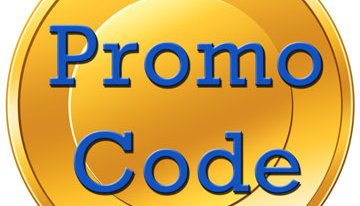It’s 2015. eCommerce in its various forms is now almost 20 years old. Marketing and incentive techniques for attracting and converting consumers to sale across industries have evolved.
Perhaps almost as ubiquitous as the leaderboards and banners used to convey incentives & promos are the infamous promo/discount/coupon codes themselves.
A promo code is not necessarily the same thing as a coupon or discount code and the distinction between the two is critical to understand, whether you lead companies engaged in direct response eCommerce, invest in them, or are part of the marketing and eCommerce working groups within companies that use promo tools in their work to meet sell through, margin and related business objectives.
Promo codes which require the end user to enter into a field manually at checkout, are calls to action and yes, they are an ‘incentive’ offering to make a purchase. However, the incentive, where it can be price/savings oriented, such as a discount aka coupon, does NOT have to include a price break, let alone an aggressive price break that hurts the merchant.
I have seen eCommerce clients across all sectors of the economy use a variety of non-cash or at least less-cash-driven incentives as manual promo code driven campaigns and generate substantial wins on conversion rate, sales and average order value; most notably when promo codes are synced well with both ever-green and very granular offers, urgency, good placement & effective placement with their associated marketing funnels.
The promo code grows up: do you need to use site-wide fixed and deep discount promo code offers such as “15% off anything if you are breathing and on our site” in order to convert existing traffic to sale more frequently? No.
Can you offer exclusive content AS THE PROMO ITSELF, such as access to exclusive video footage of a bespoke product being made by hand, or a Skype session with a master craftsman who wants you to buy his company’s couture furniture? Yes.
The “who, what, where, when and why” mindset for defining promo code usage parameters and business objectives on an eCommerce site still apply:
Who or rather which traffic segments should be exposed to or entitled to see and use a given promo code based incentive? Everyone? Just your email newsletter landing page seen by existing customers? What about on your SEM and media buy landing pages? And your remarketing campaign landing pages?
What exactly is the offer/incentive? Does it have minimum purchase level requirements, which can boost your average order values when the promos are used? Is the offer applicable to one product, a product category or to your entire product catalog?
Where should the promo code offers be seen? On all pages? Just landing pages for paid search? And where should the promo be seen on said pages? Via leaderboards and static banners, knowing that consumers have banner fatigue and ignore such site elements routinely?
When should the promo code offers be served and shown? 24x7x365? During peak or off peak hours? During urgent liquidation sell through sales? How about when you stock a new high margin product line for a new brand and need to show some early sales traction?
Why should a given promo code be used at all? What business problem(s) does using a promo code incentive solve for the merchant? What KPI’s can shine as a result of the promo code? Do you need to lift core sales volume and thus overall conversion rate? Looking to boost AOV to see more dollars per online order? How about reducing overall customer acquisition cost across some or all of your digital marketing funnels?
I recently saw a client offer a promo of less than 3% off on a minimum purchase of over $400. It worked, by controlling the timing and messaging, admittedly, with a little help from OpiaTalk, the conversions company.
When correctly delivered or conveyed, can an online merchant (in any category, from clothing and electronics to furniture, jewelry, travel, event tickets and power tools) use urgency instead of just adding extra dollars to make a cash incentive work in the merchant’s favor? Yes.

